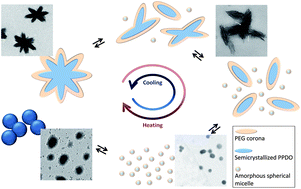Temperature dependent morphological evolution and the formation mechanism of anisotropic nano-aggregates from a crystalline-coil block copolymer of poly(p-dioxanone) and poly(ethylene glycol)
Abstract
The morphological evolution and phase transition of a branched crystalline-coil multi-


 Please wait while we load your content...
Please wait while we load your content...